
Review on FastFerment Conical Fermenter - 7.9 Gallon HomeBrew Kit for Beer, Wine, and Cider Fermentation - BPA Free Food Grade Carboy - Wall Mount Included by Sandra Edwards

Like many, I was looking for an alternative.
Like many, I was looking for an alternative to standard pails and bottles for brewing and winemaking. The rapid fermentation idea made sense, and I began researching it. I was a little discouraged at first reading all the comments about leaks and clogs. In the end, I found out that the company had allegedly increased the size of the fitting and neck. This should solve the clogging problem. I also planned on simply hanging hops, fruit, or other ingredients in a muslin bag on a stainless steel hook in the lid in case I needed to add any of those things during fermentation or secondary. I thought it would also help with blockages. Regarding the leakage, most reviewers commented that after cleaning the plastic plug around the threads things got much better and there were no issues. I'm pretty smart and figured it wouldn't be hard for me to fix this. Finally, after some time, I decided to order the product. As soon as it arrived I removed all the parts and laid everything out. I wasted no time following the instructions and installing and removing all the threaded parts many times to "break" the threads and remove this flash. I've done this for at least twice the recommended amount with very little success. There was still a lot of Flash and threads didn't run smoothly. So I proceeded to use a deburring tool to remove the plastic burr from all of the formed threads. Alternatively, a person can use an exacto or utility knife as long as they apply only light pressure and don't cut into threads. I then used sandpaper to ensure all the flashes were gone and the threads were very smooth and even. I, like many others, have found that the top of the cone, where the lid attaches and closes, also has a raised lip or ridge that prevents the lid from closing. Complete vessel occlusion, while not that important for fermentation due to CO2 pressure, is important for secondary processes and that is ultimately the main idea of this product. A good seal also helps control airlock bubbles. With the help of a sanding block and a few minutes I was able to create a very even and smooth finish on the cone. The lid now seals very well after being stuck by hand. The instructions mention using 4 turns of teflon tape on various threaded connections. They go on to mention that you might need to add more to get a good print. I tend to agree that a lot more is needed, especially if you don't clean the threads well. The protective tube is particularly sensitive to this. I first wrapped 5 wraps of tape around it and installed it only to find it bottomed out in the hole before tightening. If care is not taken, a person can ruin the vessel by tightening it further. Then I took it off and found that it took me 10 turns of tape to get the right fit. Ironically, these are one of the few themes that DO NOT have a flash. Finally I added a hydrometer sample port. With the valve closed, I "pressure tested" the fermenter by blowing into the airlock opening. PERFECT! It took some work and more than the instructions said, but now I had an airtight jar. I blew as hard as I could and not a drop came. As soon as I freed myself from the lock, the air flowed back through the hole to me. After completing the rest of the build and building the frame or stand for the fermenter (I use an old freezer as the fermenter). and fixing hands inside is not an option) I filled it with water and left for two days. Not a single leak or problem. If you're unsure whether or not you need it, here's a breakdown of the pros and cons I see, as well as how it compares to other methods. Pros: - Reasonable price - Similar cost to a good glass bottle, bucket, lid and main siphon. You can recycle beer in the same container - A lot of people think that you don't need recycled beer these days, but if you do it makes it easier to collect the ball and whistle without having to pass. I no longer use recycled ale unless I add things like hops, fruit and the like. Of course, lagers will still get the secondary beers. Wine is also of secondary importance. Thermowell - Get accurate temperature readings and use with temperature controllers in applications like mine in a freezer/compartment. cleaner and easier. Not to mention I can get my yeast tortilla out and healthy much sooner rather than waiting for me to pump beer or wine out of a bucket. You can bottle or barrel directly from the fermenter. I still prefer a dispensing bucket because to dispense from this device you have to open the lid, pour in the primer solution and then stir. I'm afraid it's more about introducing oxygen than getting the filling bucket properly filled from the bottom up. scratch or damage it during degassing, giving bacteria a place to grow. Harder to clean than a bucket, but easier than a bottle. The bottle brush works well with the valve and tapered neck. The catch ball is difficult to clean. Pretty uncomfortable to clean except in the tub. - To clean it completely, you must disassemble the connecting valve, which will void any warranty, and be careful when reassembling to ensure correct operation. - Takes up more space in my freezer. If I have anything to do with it, I can't condition, store or ferment anything else. - If you use it for the primary and secondary stages, your primary environment will be busy during the secondary/conditioning stages, meaning you can't brew or store anything else. a good rotation occurs without a second device. - If you get clogged or leaking it will make a big difference and most likely lead to a big mess or contaminated property as you put the sticks and "things" in there to clear the clog. - Very uncomfortable to move or do anything with it once you complete it. This means you have to take your brew kettle/pot there or try to get it into the final fermenting position after filling. In summary I think this is a very good product if you put in a little more effort. But how about this hobby that doesn't require any extra effort? I mean, it would be a lot easier to just go to the store and buy some beer or wine, right? I'm giving it 4 stars instead of 5 as it requires extra work to get it ready and a newly purchased product needs to be ready to use. Unless I personally plan on brewing anything else anytime soon, I just use it as a base. The ales are filled into the bottling bucket, the lagers into conditioning bottles and the wine into clarifying bottles. That way I can let other things ferment while they go out. Unless I have other brews planned, I leave everything in this fermentor until ready to be bottled or keg as the reduced shelves are nice. The biggest advantage for me with this product is the earlier yeast harvest and the preservation of vitality. Happy brewing!
- Certified
- Cord is shorter than other picks
New products
Comments (0)
Top products in 🍶 Home Brewing & Wine Making Supplies

24-Inch Musical Christmas Tree With Charlie Brown & Linus Blanket - ProductWorks

37 Review
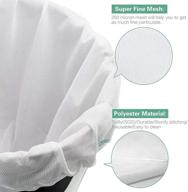
🍎 Bellamei Extra Large Reusable Brew Bags - 2 Pack, 250 Micron Fine Mesh Bags for Fruit Cider Apple Grape Wine Press Straining, Drawstring Brew in a Bag (2 pack-22"×26")

27 Review

Razorri Comodo Ceramic Fermentation Crock - 2L Traditional Water-Sealed Jar With Glazed Weights - Perfect For Kombucha, Sauerkraut, Kimchi, Pickles (Tangerine Tango)

23 Review
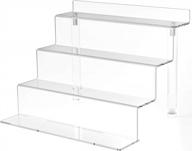
WINKINE Acrylic Riser Display Shelf: Versatile 4-tier Organizer for Perfumes, Amiibo and Funko POP Figures

28 Review
Another interesting products
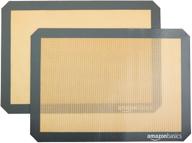
AmazonBasics Silicone Baking Mat Sheet

48 Review

100-Pack Of Disposable 18-Inch Piping Bags For Cake, Cupcake, And Cookie Decorating - Perfect For Icing And Frosting!

41 Review
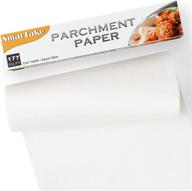
SMARTAKE Non-Stick Parchment Paper Roll, 13 In X 164 Ft (177 Sq. Ft) For Baking, Cooking, Air Fryer, Steamer, Kitchen, Cookies, Bread, And More - White Baking Pan Liner

41 Review
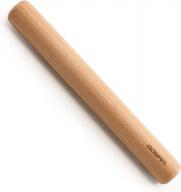
GOBAM Wood Rolling Pin: The Perfect Dough Roller For Baking Cookies, Pie, Pizza & More - 13 X 1.38 Inches

35 Review

